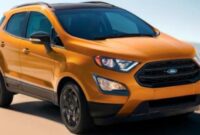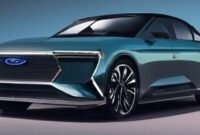Chinese automakers are starving. So far they have tapped into the giant local market to fuel their accelerated growth. With 25-28 million vehicles annually, China is not only the world’s largest auto market, but also a major source of volume and growth. A market share of 1 percent means 250,000-280,000 units per year, which is not bad compared to the figures recorded in Europe and the United States.
First phase of Made in China expansion has ended. Now is the time to go after global markets, away from internal boundaries. Chinese cars are becoming more attractive, efficient and meeting higher quality and safety standards. Now they are ready to conquer the world.

They have many elements in their favor. They can count on the strong support of the Chinese government. At the same time, their large internal market allows them to maintain production levels sufficient to reduce costs. Moreover, they are ahead of their western rivals in terms of electrification at all levels and in every segment.
Europe in Sights
Of the 1.1 million cars produced in China last year and sold overseas, 355,000 were sold in Latin America, the biggest market outside the Great Wall. Europe, in second place, accounts for 22 percent of overseas sales, followed by the Middle East, where 156,000 units have been registered. Developing countries account for 58 percent of China’s auto exports in 2021.
However, China knows that its global dominance cannot happen without a better presence in developed markets, namely Europe, the United States, Japan and Korea. The last two countries have somewhat protected markets. The United States still has geopolitical and trade issues with China. Thus, Europe is the next target for Chinese cars.
Who Will Suffer?
The arrival of more Chinese car offerings in Europe may please consumers, but will be a problem for some local manufacturers. Automakers that offer fewer products and are still lagging behind in the electrification race are the most vulnerable to the arrival of the Chinese.

Fiat, for example, is quite vulnerable. It relies heavily on Italy (47 percent of car registrations were made in Italy between January and October 2022). It has a very small product range (only 4 models, excluding two vans). It only offers one electric car, the 500e, and one SUV, the 500X.
Ford is another potential victim. The brand is breaking out of the B segment, which is not as popular as it used to be but is still an important source of volume. The Focus will likely remain the only available car after Mondeo retires. The Puma and Kuga are popular SUVs, but neither are fully electrified.
There is also a case to consider among Japanese brands. Mitsubishi, for example, currently has two models available in Europe and neither is fully electric. The brand sold only 43,000 units in the first 10 months of this year. Even in Honda’s case, the offering is somewhat limited with just five models. And Honda’s only electric vehicle, the Honda e, is struggling to survive.

What do these brands have in common? They are all in the mainstream segment, one of the most competitive and least profitable in Europe. They are struggling to maintain their market share due to limited supply. Consequently, they must be the first to feel the impact of the Chinese invasion.
The author of the article, Felipe Munoz, is an Automotive Industry Specialist at JATO dynamics.



